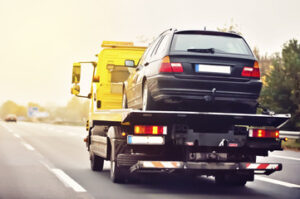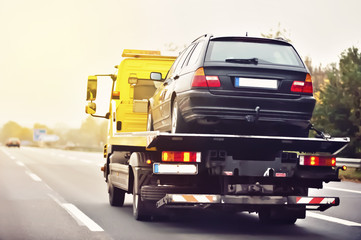Whether you’re looking to get your car out of the garage or get your heavy-duty towing company to pick up your vehicle, it’s important to be informed of the costs, safety precautions, and other factors. Here are the best tips on how to get the job done right. Light-duty towing vs. heavy-duty towing. A proper understanding of the differences between light-duty and heavy-duty towing is important when you need towing services. Tow Truck can help to move your car to a repair facility or rescue stranded cars.
 Heavy-duty towing is necessary when you need to move heavy materials. You may need to haul industrial machinery, large shipping containers, or even a tractor-trailer. Typically, heavy-duty towing trucks are more powerful than light-duty towing trucks. This means they can move heavier weights more quickly and safely. However, these heavy-duty towing trucks can also cost more, so choosing the right truck for your needs is important.
Heavy-duty towing is necessary when you need to move heavy materials. You may need to haul industrial machinery, large shipping containers, or even a tractor-trailer. Typically, heavy-duty towing trucks are more powerful than light-duty towing trucks. This means they can move heavier weights more quickly and safely. However, these heavy-duty towing trucks can also cost more, so choosing the right truck for your needs is important.
Light-duty towing is used for smaller vehicles and regular vehicles. It involves standard towing services, including accident recovery, abandoned vehicle removal, and private property towing. Light-duty towing involves towing smaller vehicles like cars, trucks, SUVs, and motorcycles. It can also include towing smaller trailers or fluids. This type of towing is less expensive than heavy-duty towing, so it is a good option for some people.
You can find a towing company with experience when you need towing services. The wrong truck could cause damage to your vehicle, or you could end up spending more money. Towing a vehicle can be stressful, so it is best to leave it to professionals. Using the correct safety precautions for heavy-duty towing can ensure your safety and the safety of your cargo and other road users. Using the right safety techniques will save you time and money and prevent injuries.
One of the most important safety precautions for heavy-duty towing is to check your equipment. Make sure your tow vehicle is in tip-top shape, and that you have the proper inflated tires. Tires that are underinflated will lead to increased rolling resistance and blowouts. Similarly, overheated wheel bearings can cause your rig to sideline faster than a flat tire.
For starters, check your trailer’s lights. Make sure that your trailer lights are properly attached to the tow vehicle. It is also a good idea to check that your trailer’s lights are in sync with the tow vehicle’s lights. Using safety chains is the safest way to secure a trailer. The chains should hook onto the trailer hitch diagonally opposite the point of attachment. You should also make sure the chains stay on the road.
One of the more important safety precautions for heavy-duty towing is your freight distribution. This may involve the use of wedges, chocks or tie-downs. Depending on the size of the vehicle, the cost of heavy-duty towing can range from $100 to $300. However, the cost can also vary by the distance between the garage and the crash site. Heavy-duty towing services are available to motorists in need of assistance. These services include towing vehicles from private property, helping victims of road accidents, and removing wrecked cars. In addition, some companies offer standard auto removal services.
The cost of heavy duty towing will depend on the distance the vehicle needs to be towed, the weight of the vehicle, and the time of day. Most towing companies charge a minimum of $50 to cover the costs of the tow. Some companies may increase the cost per mile after a certain number of miles. These companies have specialized equipment that ensures your vehicle’s safety and others’ property. If you need to have your car towed, use a service with a high safety record.
Light duty towing involves using conventional tow trucks and other vehicles to retrieve abandoned vehicles and perform other routine towing services. These vehicles can handle small trailers, jump start vehicles, and haul fluids. Heavy-duty towing refers to the use of special equipment for hauling large vehicles. This includes the use of semi-trucks, flatbeds, and other vehicles.

